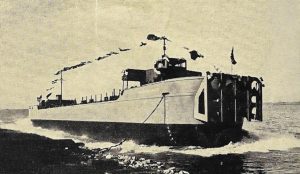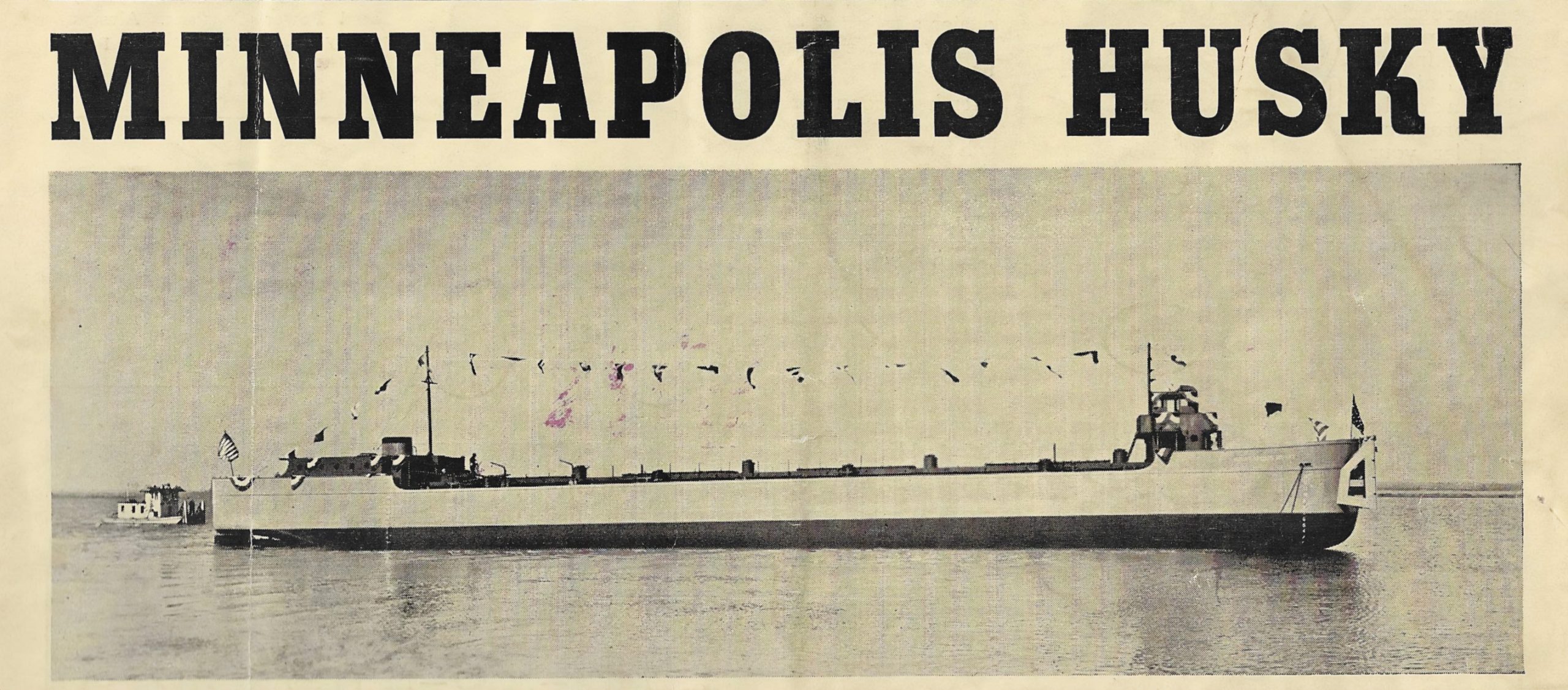Innovation has always been prevalent in the river industry. Some ideas have been highly successful and widely accepted while others did not pan out. In the May 17, 1941, issue of The Waterways Journal, Louisville News correspondent C.W. Stoll wrote an article regarding his visit to the Ingalls shipyard at Decatur, Ala. The purpose of his visit was to inspect a “195-foot oil barge” the shipyard was building for the Stoll Oil Company, which his family owned.
Stoll noted in his article, “The craft which attracts the most attention, of course, is the 235-foot self-propelled tanker Minneapolis Husky, under construction for the Upper Mississippi Towing Corporation.” Upper Mississippi Towing Corporation was formed in 1937 as an affiliate of the Western Oil & Fuel Company of Minneapolis, founded by H.M. Baskerville Sr. and his brother W.G Baskerville Sr. in 1926. According to Stoll’s article, the Minneapolis Husky would be able to operate on the rivers or on the Great Lakes.

The new tanker was described in detail in the July 12, 1941, issue of The Waterways Journal. According to the article, the owner of the vessel was the Husky Transit Corporation (also controlled by the Baskervilles), and it had a capacity for 12,500 barrels of liquid cargo and approximately 100 tons of dry cargo. The all-welded steel hull measured 235 feet by 35 feet wide, with a molded depth of 14 feet. The main engines were two National Superior diesels, each rated 350 hp. at 600 rpm. The three-bladed propellers were 60 inches in diameter with 28 inches of pitch.
The vessel was designed by noted naval architect A.M. Deering of Chicago. It resembled a Great Lakes craft with the pilothouse forward and a deckhouse for the crew quarters in the after section. The crew quarters were “fully insulated with glass wool.” The galley, also located in the after deckhouse, was equipped with a “WebbperfectioN three-foot oil burning range,” as well as “enameled metal cabinets” and a “14-cubic-foot Midwest electric refrigerator.”
The steering system was said to be of a special design by A.M. Deering. Unlike typical blue water vessels, the Minneapolis Husky had two separate sets of rudders. One set aft of the propellers was for steering and another independent set forward of the props for flanking, just like a river towboat. In fact, photos show a large set of towknees affixed to the high, ship-like bow of the craft. The Inland River Record always listed it as a “tanker-towboat.”
Ads for National Supply Company, which furnished the Superior diesels, featured the Minneapolis Husky prominently on the front cover of The Waterways Journal for several issues of 1941, describing the vessel in this way: “Designed and built with tanks for petroleum and center cargo hatches for dry cargo or petroleum products, the recently launched twin-screw tanker-towboat MINNEAPOLIS HUSKY is an entirely different type of craft—something new for Old Man River.”
Specifically designed for “express service,” it was estimated that the Minneapolis Husky would have a speed “nearly three times that of a barge and towboat unit.” The article concluded by stating, “It is expected that the commercial success of this vessel will result in the future construction of several similar craft.” The commercial success of the Minneapolis Husky may have been limited, since as far as we’re aware, this is the only such vessel ever built.
In 1944, the Minneapolis Husky was sold to Republic Oil Refining Company of Houston and renamed the Republic-Pittsburgh. Republic Oil had the vessel extensively rebuilt at Hillman Barge & Construction Company in Brownsville, Pa. It was also repowered at that time with a pair of Cooper-Bessemer JS-8 engines that totaled 1,600 hp. at 450 rpm. In 1946, the vessel was sold to American Barge Line, and in 1952 it was again rebuilt, this time by Jeffboat in Jeffersonville, Ind. In 1954, it was sold to Clark Oil & Refining Company of Milwaukee, Wis., and renamed Clark-Milwaukee.
A photo of the Clark-Milwaukee shows the effects of the rebuilds. The pilothouse is missing, leaving only a low cabin structure. In addition, the cargo tanks appear to have been raised to increase capacity. It was last listed in the 1964 edition of the Inland River Record, but subsequent research shows that it was sold to Greek interests and renamed Limni. It was reportedly scrapped in 1973.
————
Featured photo caption: The new Minneapolis Husky on the cover of the May 17, 1941, issue of The Waterways Journal. (From the author’s collection)



